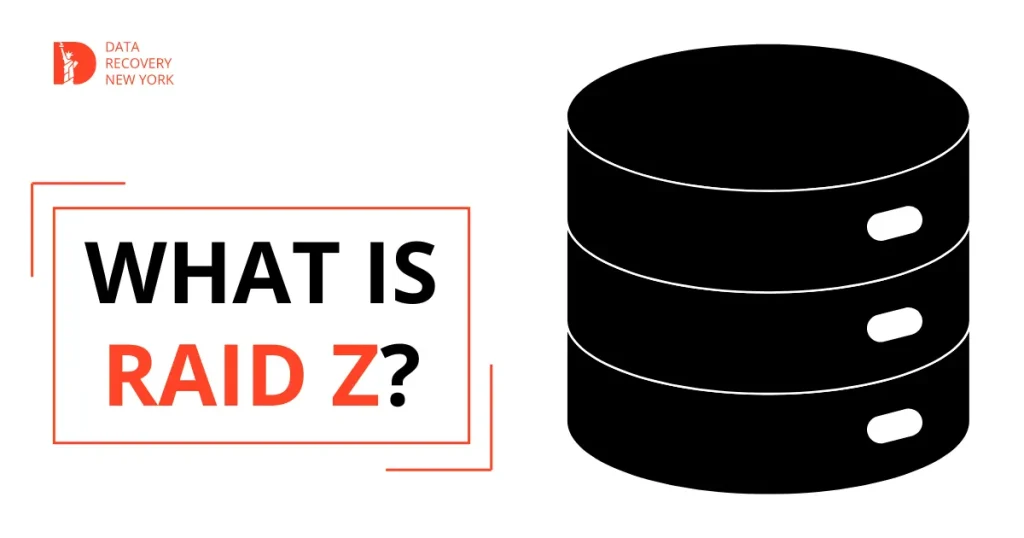Reliability and redundancy are crucial in data storage. RAID-Z, developed by Sun Microsystems, efficiently addresses these needs for ZFS. This blog explores RAID-Z essentials, enhancing data integrity and protection against drive failures.
Learn how RAID-Z simplifies storage management for system administrators, data engineers, and tech enthusiasts. Discover why RAID-Z is a preferred choice in data storage solutions.
RAID-Z Basics
This is a data storage technology in computer science. It refers to a Redundant Array of Independent Disks (RAID-Z). It combines multiple physical hard drives into one logical unit. RAID-Z allows for better performance and increased fault tolerance. Businesses and individuals find it attractive due to its benefits.
How does ZFS RAID work?
RAID Z spreads data across multiple disks like RAID 0 but adds parity data for extra protection. Parity data ensures data safety.
It calculates differences between bits in each stripe. The parity data is stored on a separate disk. In case of a disk failure, parity data reconstructs the lost data. RAID-Z ensures no data loss and continuous functionality.
Advantages of RAID-Z
Enhanced Data Integrity
Unlike other RAID levels, RAID-Z ensures data integrity through checksums. Each block of data written to the array is accompanied by a checksum generated using a hash function. This checksum is later used to verify the integrity of the data, protecting against silent data corruption.
Improved Fault Tolerance
By leveraging parity data, RAID-Z provides robust fault tolerance. In the event of a disk failure, the RAID-Z array can use the parity data to reconstruct and restore the lost data, allowing the system to continue running without data loss.
Efficient Storage Utilization

RAID-Z offers better storage efficiency compared to traditional RAID levels like RAID 1. Instead of duplicating data across disks, RAID-Z uses parity to achieve redundancy, which means higher net storage capacity for the same number of disks.
Scalability
RAID-Z arrays are easily scalable. Additional disks can be added to the array without significant restructuring, providing flexibility and the ability to expand storage capacity as needs grow.
Simplified Management
ZFS, the filesystem typically used with RAID-Z, includes features like simplified administration, easy snapshots, and cloning capabilities. Managing a RAID-Z array is easy, even for those with little storage management experience.
Disadvantages of RAIDZ
Performance Overhead
One drawback of RAID-Z is the performance overhead associated with parity calculations. Each write operation involves computing and writing parity data, which can result in slower write speeds compared to other RAID configurations like RAID 0 or RAID 1.
Complexity in Setup
Setting up a RAID-Z array can be more complex and time-consuming than other RAID levels. It requires a good understanding of both RAID principles and the ZFS filesystem, which may not be ideal for beginners.

Rebuild Time
In the event of a disk failure, the process of rebuilding the array using parity data can be lengthy. The time taken depends on the size of the array and the data stored.
During this period, the array performance may degrade, and the risk of additional disk failures increases.
Limited Support
RAID-Z is primarily associated with the ZFS filesystem, which is not natively supported by all operating systems. This can limit its use in environments that do not support ZFS, requiring additional steps to integrate Redundant Array of Independent Disks Z solutions.
Hardware Requirements
Using a RAIDZ array may require better hardware, including more RAM and CPU power. This is necessary to handle parity calculations and data integrity checks effectively, which can lead to increased costs compared to simpler RAID configurations.
RAID-Z variations

There are several variations of RAIDZ, each with its unique features and use cases:
RAID-Z1
RAID-Z1 is the basic version of RAID-Z, similar to RAID-5. It employs one parity disk and can survive a single disk failure, making it a cost-effective option for enhancing data security without sacrificing too much storage capacity.
RAID-Z2
RAID-Z2, akin to RAID 6, includes two parity disks instead of one. This setup offers higher fault tolerance, allowing the array to withstand two simultaneous disk failures. It’s an excellent choice for environments where data integrity is paramount.
RAID-Z3
RAID-Z3 is the most redundant option in the Redundant Array of Independent Disks Z family. It features three parity disks, enabling the array to survive up to three simultaneous disk failures. This configuration is ideal for mission-critical systems where maximum data protection is essential.
ZFS RAID Expansion
The RAID-Z Expansion variation allows for the easy expansion of an existing array by adding more disks without rebuilding the entire array from scratch. This flexibility ensures that storage capacity can seamlessly grow with the organization’s needs.
RAID-Z Mirroring
ZFS RAID Mirroring combines the benefits of traditional mirroring with RAID-Z. It utilizes two sets of disks, with one set serving as the primary array and the other acting as a backup. This dual-layer approach provides additional fault tolerance, ensuring data is safeguarded even if multiple disks fail.
RAID-Z offers versatile and reliable data storage technology with many advantages over traditional RAID levels. It enhances data integrity with parity data, improving fault tolerance. ZFS provides efficient and scalable storage solutions.
It offers flexibility to meet specific storage needs. Businesses and individuals can benefit from RAID-Z’s robust data management features, which ensure your data is safe and secure. Try RAID-Z to experience its benefits firsthand.
Frequently Asked Questions
What type of RAID is ZFS RAID?
This is a type of RAID specifically designed for the ZFS file system. It provides similar functionality to traditional RAID levels but with data integrity features.
Is RAID Z1 better than RAID 5?
RAID Z1 is better than RAID 5 because it has improved data protection and can fix errors automatically. However, performance levels may vary depending on the circumstances.
What is the difference between RAID and Raidz?
RAID is a general term for various data storage schemes. Raidz is a type of RAID used in ZFS that includes features like data integrity checks for added protection.
How fast is Raidz 1?
RAIDZ 1’s speed can vary depending on hardware and settings. It typically operates similarly to RAID 5. Additionally, it provides the benefit of guaranteeing data integrity.
Why is ZFS better than RAID?
ZFS is better than RAID because it has data checks, can fix itself, and can grow as needed. It’s a strong option for storing data.

